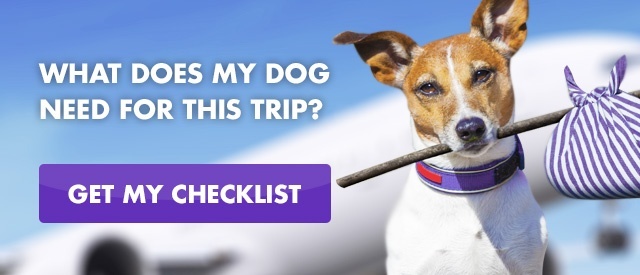How to Acclimate Your Pet To Their New Home
Published on: December 22, 2022 | Author: Starwood Pet Travel

Introducing your pet to a new home can be a lesson in patience. Whether you’re bringing home a newly-adopted dog or cat, or you’re moving with your four-legged family member to a new house or city, relocating can be tougher on your pet than you may realize.
If your family is moving overseas, it’s highly likely you’ll be living in an apartment or smaller quarters than you’ve been used to. So not only is it all new, it’s very different in other ways. There may be no personal yard to play in. Or you may be moving to a foreign city where cats aren’t allowed to roam free outdoors. Knowing what you and your pet will face will during an international move will help both of you acclimate smoothly.
Moving ain’t fun
Just think how stressful moving is for you. All that mess and confusion. Now think about the fact that your pet doesn’t understand what’s happening. And they take cues from you. In the midst of all this chaos, you must lead with Zen-like calm. And good humor, even in the face of moving-related misbehaviors.
“Forgetting” their training – or acting weirdly in other ways – are signs your pet feels a lack of control. Their comfort zone is in disarray. They may go potty indoors, become irritable, or hide under the bed or on top of the refrigerator (not your dog, probably). Cats sometimes hide for hours or days before they feel ready to venture out.
The thought of unpacking may make you feel the same way, but you’re the human here. Just make sure your cat's food, water, and litter box are nearby – and spend some time sitting nearby yourself, speaking in reassuring tones. We also have some other ways to reduce stress on your pet during a move here.
Helping your pet claim their new digs
Taking steps to alleviate your pet’s anxiety will help you relax, too. That’s doubly motivating, yes? So let’s get started.
Most dogs are pretty adventurous, so your pooch may have few qualms about exploring their new home. Nonetheless, you can help them see this as a fun new experience. Cats, on the other hand, are usually not in favor of change. You’ll want to be even more aware of your cat's response to moving, and you have to be even more patient as they adjust.
Experts recommend confining both cats and dogs initially after a move. Create a “safe place” for them, either a room you can close off or a crate if your dog is trained to use one. You can gradually introduce them to the rest of your abode. In fact, if you have a dog, keep them with you while you’re in the house, so they can look around under your watchful eye. Being with you is reassuring, too – they can see you haven’t abandoned them.
While cats can use their litter box, your dog will need to go outside. Leash them up and take them out often, leading them directly to the place you want them to go. This will help relieve anxiety as well as relieve them physically. They are learning new spots that are "theirs."
There’s comfort in the familiar
One thing humans do love about moving is that you get to acquire new things for your new home. Don’t extend this thinking to your pet. They need all the reassurance they can get, and a primary part of that is retaining “their” stuff. Their food and water bowls, bedding, and toys. Set up your pet’s feeding station in as similar a location as possible to the old one. And don’t change it. Put their bed(s) in similar positions relative to furniture.
But note that both cats and dogs often like to scope out their own favorite snoozing spots, so watch for that and move your pet’s bed if a new location seems to make them happiest.
If possible, arrange pet play dates with any neighboring canines or felines. You’ll want your new neighbors to recognize your pet, and especially if you have a dog, formal, positive introductions can help avoid potential territorial disputes.
Take things gradually. And remember, the most important thing in your pet’s life is you. The more loving and understanding you are, the easier it will be for your furred one to acclimate quickly to their new surroundings. Extra time spent petting, playing, or just sitting together will go a long way toward showing your pet they're safe and sound in their new home. You’ll feel better, too.
Starwood Animal Transport has rebranded to Starwood Pet Travel. We are still the same great company with the best team, just now with a slightly different name.
Subscribe to the Blog
Enjoy our content? Get them sent to your inbox!
Subscribe Now!


